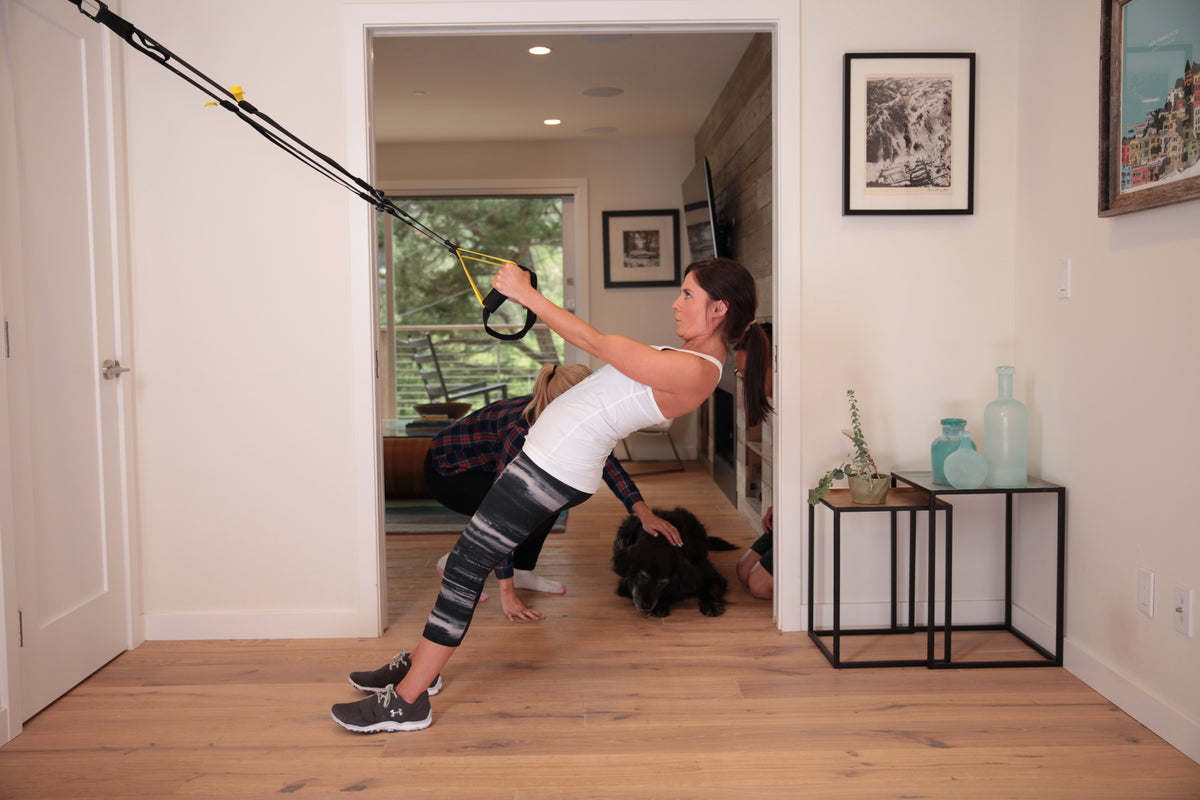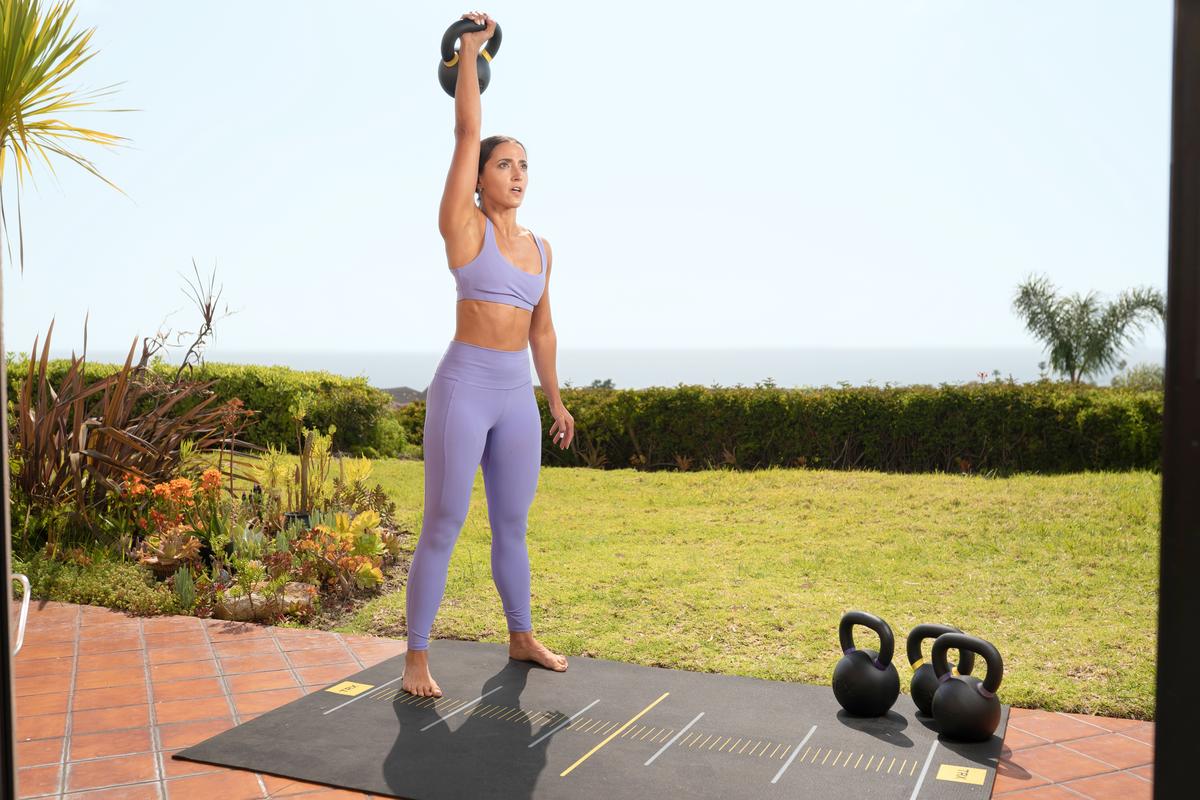Working out routinely is a fantastic way to improve and maintain your health. But, if you’re not stretching both before and after your workout, you’re not taking advantage of a complete workout routine.
There are many types of stretches to consider. Let’s discuss the types of stretching and the importance of each.
4 Types of Stretching
There are four main types of stretching. While all are important to a healthy workout routine, each style is beneficial in different phases of your workout.
1. Dynamic Stretching
Dynamic stretching loosens your joints, helps your range of motion, and helps to improve your form. Dynamic stretches are highly beneficial before your workout because they warm up your muscles. It can be as easy as walking a bit before you jog, marching in place before you jump rope, or cycling for a few minutes before lifting weights.
When using equipment like a treadmill, elliptical, or stair climber for a cardio workout, you can keep it at a low resistance level before jumping into a pre-set high-performance routine.
In your home gym, dynamic stretches can include an exercise mat and the following moves:
- Bodyweight squats
- Lunges
- Knee lifts
- Inchworms
- Twists
2. Active Stretching
Active stretching helps to release tension and improve flexibility. There is no external force in active stretching, so you don’t need accessories or a partner. You’re actively moving one muscle group to stretch another. It’s typically done before your workout routine to promote blood flow to the muscles you intend to focus on.
Because active stretching follows the neurological principles of human movement, it re-trains your muscle groups to relax, allowing for more effective muscle extension over time.
Active stretches include:
- Hamstring stretch
- Triceps stretch
- Chest stretch
- Quadriceps stretch
3. Static Stretching
You perform static stretches by moving a muscle or muscle group as far as it can go without pain and holding that position for up to 45 seconds. Repeating each static stretch two to three times is an efficient way to increase your overall flexibility.
These are most beneficial after your workout since they help with muscle recovery, reduce cramping, and cool down your body. Using static stretches for maintenance stretching can help reduce your risk of injury.
Examples of static stretches include:
- Overhead triceps stretch
- Shoulder stretch
- Calf stretch
- Cobra pose
- Adductor stretch
4. Passive Stretching
Passive stretching uses external forces to stretch your muscles. External forces can include body weight (and gravity), equipment, or other props to relax your body and allow the equipment to intensify the stretch. Resistance bands are popular equipment, but you can also use props like the wall or floor. Like static stretching, it’s most beneficial after a workout when your muscles are warm.
Passive stretching can improve long-term flexibility and range of motion. It also stimulates muscle growth and can help to prevent muscle weakness.
Examples of passive stretches include:
- Alternating supine single-leg stretch
- Runner’s lunge
- Doorway stretch (using an open doorway as a prop)
- Child’s pose
- Lying knee to chest
Stretches for Warming Up
Before any fitness routine, it’s essential to warm up your body to prepare it for heavier demands. A warm-up gradually increases blood flow and oxygen to your muscles, boosts your breathing rate, and raises your body temperature.
During a warmup, your blood vessels dilate, which reduces strain on the heart. Oxygen becomes more readily available to the muscles. Warmer muscles contract more forcefully and have superior elasticity and speed. The joints are also looser, which expands your range of motion.
These physiological changes caused by warmups help improve overall exercise performance and reduce the risk of injury.
Warmups should last from 3 to 10 minutes, depending on the intensity and duration of the upcoming exercise session. Even if you’re pressed for time, don’t skip the warmup. Some preparation is always better than none.
Stretches for Cooling Down
The best time to stretch is after workout sessions. Stretching enhances elasticity in the muscles, tendons, and ligaments, which helps combat tightness and soreness. During exercise, your muscles repeatedly contract and shorten; stretching helps lengthen muscles and release tension that can cause stiffness.
For best results, stretch after every workout – even if you only have a few minutes. The American College of Sports Medicine recommends a minimum of two stretching sessions per week.
Keep these guidelines in mind for your post-workout stretch:
- Target major muscle groups. This includes the upper and lower back, chest, shoulders, triceps, hips, glutes, quads, hamstrings, and calves.
- Hold steady. Don’t bounce, which can lead to muscle tears. Hold each stretch for up to 45 seconds.
- Avoid pain. Discomfort is expected, but don’t push to the point of pain.
- Breathe. Don’t hold your breath. Instead, concentrate on deeper, slower breaths.
Stretches for Regular Muscle Maintenance
Outside of a workout routine, gentle stretching is beneficial in the morning, throughout the workday (especially if you sit at a desk), and before bed.
Regular stretching leads to better flexibility, which is particularly important because we tend to lose range of motion as we age. It also can contribute to improved posture and coordination by preserving muscular health and augmenting kinesthetic awareness.
Furthermore, greater flexibility can help with muscle recovery and reduce the risk of injuries. And although it may be a “hurts-so-good” experience, stretching ultimately promotes relaxation to reduce stress.
When to Avoid Stretching:
Believe it or not, there are times when it makes sense to avoid stretching your muscles. These times include:
- If you have a chronic condition or injury
- When you have a muscle sprain or strain
- When you have a broken bone or bone fracture
- When you have limited range-of-motion issues due to joint injuries
- When you have a joint infection or inflammation
If you have any other medical conditions that cause pain while stretching, it’s best to speak to your physician or physical therapist before continuing.
Warmups and stretching are critical bookends that start and finish your workout sessions and help your body perform at its best over time.



